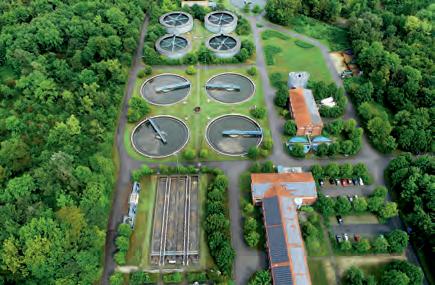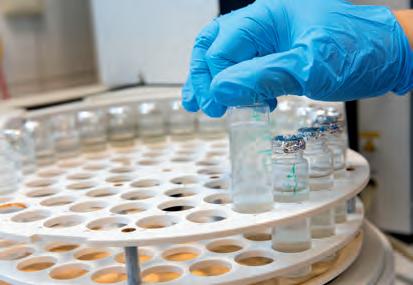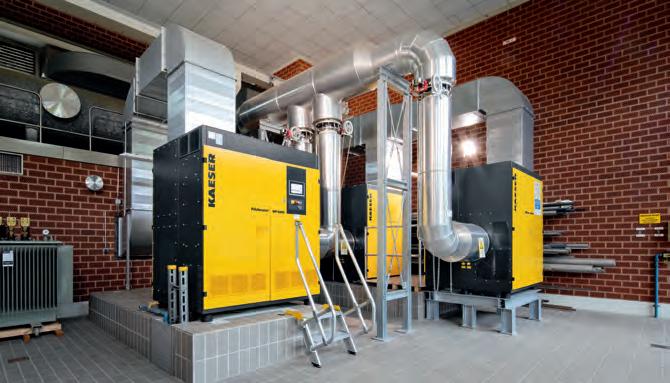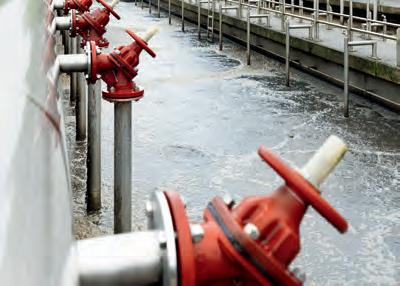
4 minute read
The traditional and the modern
Landshut in Lower Bavaria is the setting for a wonderful historical spectacle that takes place every four years and is known worldwide as the “Landshut Wedding”. The event attracts amazed onlookers from across the globe who, thanks to the more than 2,000 participants in authentic traditional costume, find themselves transported back to the Middle Ages and the year 1475.
The town of Landshut celebrates this festival commemorating the wedding between Hedwig, daughter of the Polish king, and Georg, son of the Duke of Landshut, every four years – demonstrating how important the town’s historical roots are to its inhabitants. During this event the population of the town doubles, which creates an obvious challenge for the local wastewater treatment plant.

The Landshut Dirnau treatment facility, commissioned in 1989 as a two-stage aeration plant, provides mechanical, biological and chemical treatment for the daily municipal and industrial wastewater from the town and its neighbouring communities. Here the wastewater passes through a variety of stations for the removal of solids and chemicals. In the first stage, solid particles are removed in a mechanical process. Next, microorganisms are used to biologically purify the water through a number of cleaning stages that break down contaminants, nitrates and phosphates. In the digestion towers, biogas is extracted from the resulting sludge which is subsequently used to generate renewable electricity and heat. All of these technical processes are monitored and controlled by highly qualified personnel using state-of-the-art process control technology.

Air for microorganisms
Inside the aeration tanks, microorganisms present in the activated sludge break down the organic contaminants into carbon dioxide (CO2) and elementary nitrogen (N2); phosphorous is released as phosphate and chemically precipitated. In order to be able to do their job, the microorganisms must be provided with plenty of oxygen. Until the recent refurbishment, the air supply was handled by three ageing turbo blowers, and it had been recognised for some time that in the event of a breakdown with the 30-year old blower controller, it would be impossible to find replacement parts. Thus the plant operator’s thoughts had long since turned to how the future air supply for the aeration tanks should look.

Current air demand for the existing four tanks varied between 4,000 and 12,000 m³/min, with a required pressure of approx. 400 mbar. When it came to writing the tender for procurement of the new turbo blowers, the operator targeted a solution that would deliver significant energy savings and also be able to cover any future expansion of the plant. To meet the required performance range, KAESER suggested three MP 6000 turbo blowers (flow rate 1,300 to 6,800 m³/min, pressure 300 to 1,200 mbar).

Directly coupled, oil-free compression turbo blowers from KAESER are especially dependable and energy-efficient thanks to their high-speed motors, and stand out for their exceptional flexibility. The turbo impeller and motor shaft start, stop and rotate by means of magnetic bearings, making them completely wear-free and without need of maintenance. This future-oriented turbo blower design is used for low-pressure applications with high flow rates and particular need of energy efficiency and process air availability. To achieve especially high efficiency, machines feature direct power transmission between motor and impeller, in addition to variable-speed flow rate control.

The wear-free magnetic bearings enable virtually unrestricted start-stop operation for intermittent aeration processes, whilst perfect interplay between all components and the intelligent controller permits energy savings of up to 25 percent. Moreover, due to the calculated savings, the purchase was eligible for a subsidy in accordance with municipal guidelines. Benjamin Siegert, manager of Landshut treatment plant, declares himself more than satisfied with the new turbo blowers from KAESER, which in comparison to their older machines are saving around 200,000 kWh of electricity per year (equating to around 10 percent). Benjamin Siegert enthuses, “With this purchase, we are well-prepared to face the future.”








